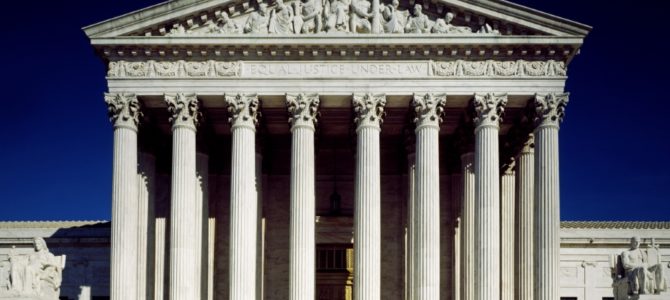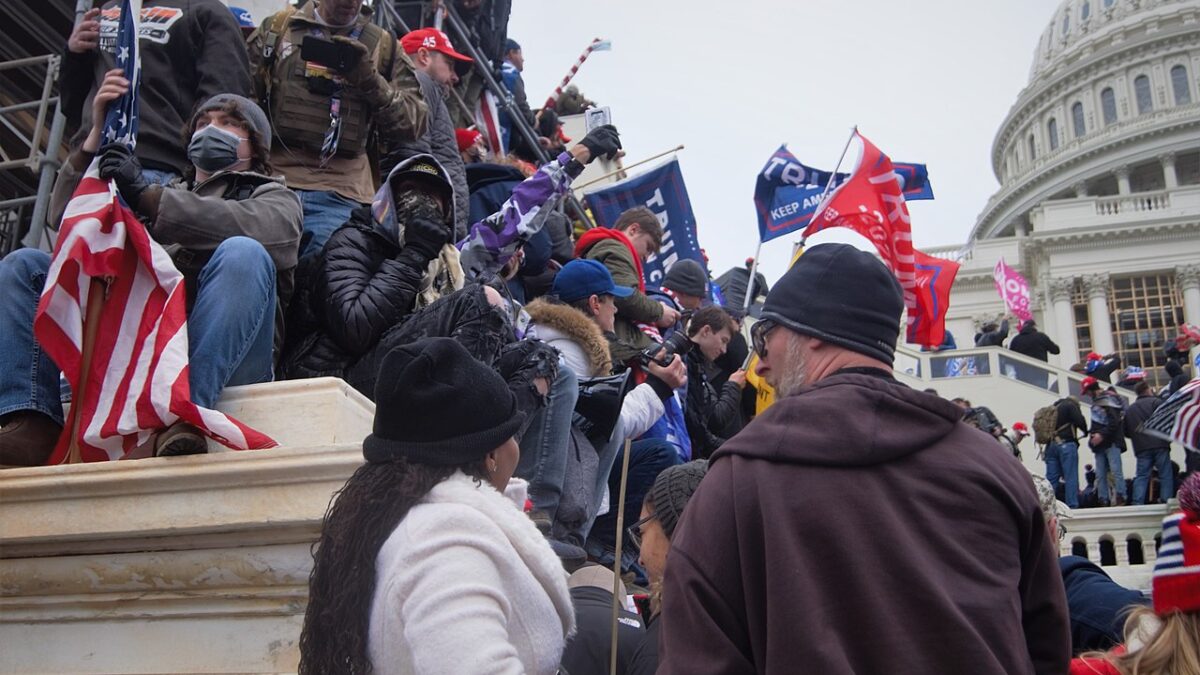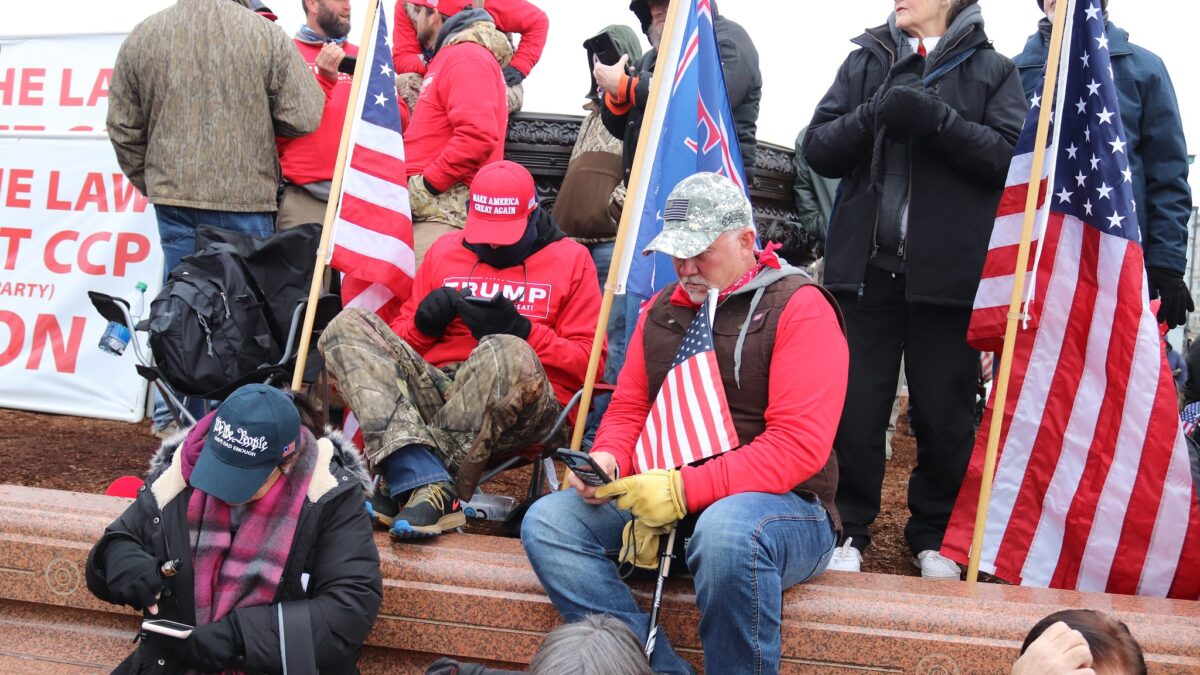
In a 6–3 decision this past Monday, the Supreme Court rewrote Title VII of the Civil Rights Act of 1964. While Title VII prohibits discrimination in employment “because of an individual’s sex,” the majority held, in an opinion authored by Justice Neil Gorsuch, that “an employer who fires an individual merely for being gay or transgender defies the law.”
The judicial usurpation of the legislature’s role, however, was but half of the horror of the Supreme Court’s decision. Equally appalling was the court’s faulty analysis of the question of Title VII’s application to transgender persons.
While both aspects of the court’s decision in Bostock v. Clayton County, Georgia, are harmful to our country, Gorsuch’s blinking over the difference between homosexual and transgender claimants damages not just our constitutional order, but civil society. Unfortunately for the country, the resulting cultural war will compete in scope with the fall-out from Roe v. Wade.
A Muddled Conflation of Classifications
The Bostock case served as the lead opinion on Monday, but there were three separate cases before the Supreme Court. Altitude Express v. Zarda also presented the question of whether homosexual employees (or applicants) are within the scope of Title VII’s prohibition on “sex” discrimination.
The final case, R.G. & G.R. Harris Funeral Homes, Inc. v. Equal Opportunity Commission, involved a separate question, one the Supreme Court framed as whether “Title VII prohibits discrimination against transgender people based on (1) their status as transgender or (2) sex stereotyping under Price Waterhouse v. Hopkins.”
The Supreme Court combined the cases for purposes of the decision — and there was a very “good” bad reason it did so: Gorsuch’s reasoning collapses when the case of a “transgender” individual — enclosed in quotes because the court leaves that term undefined — is inserted in the parade of hypotheticals the majority used to justify its decision.
Rather than analyze the questions separately, Justice Gorsuch conflated the two separate classifications, analyzed homosexual employees (or applicants), and then added a throw-away conclusory sentence to extend the reasoning to transgender people.
The court’s reasoning went as follows: Title VII prohibits discrimination in employment on the basis of an individual’s sex. For purposes of the decision, the court assumed “sex” meant “biological sex,” while also suggesting the term might mean something broader. “To ‘discriminate against’ a person, then, would seem to mean treating that individual worse than others who are similarly situated,” the court continued, noting also that the “difference in treatment based on sex must be intentional.”
Justice Gorsuch next joined these principles: “So, taken together, an employer who intentionally treats a person worse because of sex — such as by firing the person for actions or attributes it would tolerate in an individual of another sex — discriminates against that person in violation of Title VII.”
The court would later repeat this standard, stating: “If the employer intentionally relies in part on an individual employee’s sex when deciding to discharge the employee — put differently, if changing the employee’s sex would have yielded a different choice by the employer — a statutory violation has occurred.” Then the court illustrated how this standard applies in the context of a homosexual:
Imagine an employer who has a policy of firing any employee known to be homosexual. The employer hosts an office holiday party and invites employees to bring their spouses. A model employee arrives and introduces a manager to Susan, the employee’s wife. Will that employee be fired? If the policy works as the employer intends, the answer depends entirely on whether the model employee is a man or a woman. To be sure, that employer’s ultimate goal might be to discriminate on the basis of sexual orientation. But to achieve that purpose the employer must, along the way, intentionally treat an employee worse based in part on that individual’s sex.
From this reasoning, the court concludes that “when an employer fires an employee for being homosexual or transgender, it necessarily and intentionally discriminates against that individual in part because of sex.” That is enough, according to the court, “to establish liability under Title VII.”
The Dissent Doesn’t Go Far Enough
Justices Samuel Alito, Brett Kavanaugh, and Clarence Thomas dissented from the court’s opinion, with Alito writing a dissenting opinion joined by Thomas, and Kavanaugh filing a separate dissent. The dissents thoroughly eviscerated the majority’s analysis from a textual perspective, establishing that “sex” does not mean “sexual orientation” or transgenderism.
But none of the dissenters recognized the further flaw in the majority’s opinion—that the standard Gorsuch crafted in the context of a homosexual employee fails to withstand scrutiny when applied to a transgender employee. The court’s opinion, however, muddled the analysis so thoroughly that even the dissenting justices did not realize the majority opinion’s failure to analyze discrimination based on transgender status and homosexual status separately.
In fact, after noting that “this opinion does not separately analyze discrimination on the basis of gender identity,” Kavanaugh allowed that “the opinion’s legal analysis of discrimination on the basis of sexual orientation would apply in much the same way to discrimination on the basis of gender identity.” On the contrary: The opinion’s legal analysis crumbles when applied to transgender people.
Let’s consider an example, much as the majority did to prove its case. During a job interview, Chris, who is a biological male but identifies as a female, is at a luncheon with a potential employer and several co-workers. A top female executive, Susan, excuses herself to use the restroom and Chris likewise excuses himself. The two chat as they walk down the hall and then Chris enters the ladies’ room with Susan, to her shock. Chris explains that he is transgender.
The company does not hire Chris and he sues, claiming sex discrimination. The company counters that it rejected Chris’s application because he had used the ladies’ restroom, making one of its most valuable female employees feel uncomfortable. Is this sex discrimination?
Applying the majority’s standard, it is. That standard says that “if changing the employee’s sex would have yielded a different choice by the employer — a statutory violation has occurred.” Changing Chris from a biological male to a biological female alters the employer’s decision because Susan would have no problem with a female Chris using the lady’s room, because in that case, Chris is a woman.
But Chris isn’t a woman. He is a man. And there’s the rub. The law cannot merely “change the employee’s sex” to determine if there is “sex discrimination,” because there are actual sex-based distinctions, and when an employer considers those, it is not engaging in sex discrimination. Put another way, men and women are not always “similarly situated.”
Balking at the Hard Questions
The majority opinion refused to grapple with simple reality and set to the side the issue of “sex-segregated bathrooms, locker rooms, and dress codes,” saying “we do not prejudge any such question today.” Yet, in the same decision, the court used a running thread of hypotheticals to prove its case in the context of a homosexual employee then blurred the application of its standard in the context of a transgender individual.
For instance, at one point the court wrote:
Take an employer who fires a transgender person who was identified as a male at birth but who now identifies as a female. If the employer retains an otherwise identical employee who was identified as female at birth, the employer intentionally penalizes a person identified as male at birth for traits or actions that it tolerates in an employee identified as female at birth. Again, the individual employee’s sex plays an unmistakable and impermissible role in the discharge decision.
What are those “traits or actions?” The court doesn’t say. That’s for a very simple reason: When you are addressing a case involving transgender individuals, you are not merely talking about general traits or actions — such as bringing a same-sex partner to a company function — but about individuals acting in contravention to biological sex-based distinctions.
The only way, then, to declare discrimination against a transgender individual “sex” discrimination under Title VII, is to view the sexes as indistinguishable. The court’s standard does this, and thus, under the court’s standard, an employer cannot take into consideration biological sex-based distinctions. So, single-sex restrooms, locker rooms, and dress codes are necessarily forbidden.
The facts of this case also mandate a further conclusion: that an employer must affirm a false sex or violate Title VII.
For all the framing of this case as involving an employer who fires an individual “merely for being transgender,” the termination, in this case, occurred when the employee informed his employer that he intended to “live and work full-time as a woman.” We are thus not talking about “traits” and “actions,” but of an individual who declared to his boss that he intended to present himself as a woman and expected others to consider him a woman.
By adopting the standard for transgender claimants that it did, the Supreme Court has just told Americans that they too must consider men women and women men in the workplace. We’re likely to see the same dictate extended to public schools and health care settings.
Make no mistake, this decision launched a second great front in our country’s cultural war, which, along with Roe v. Wade, will continue for generations. In both cases, conservatives have science on their side, even if they don’t (yet) have the Supreme Court.









